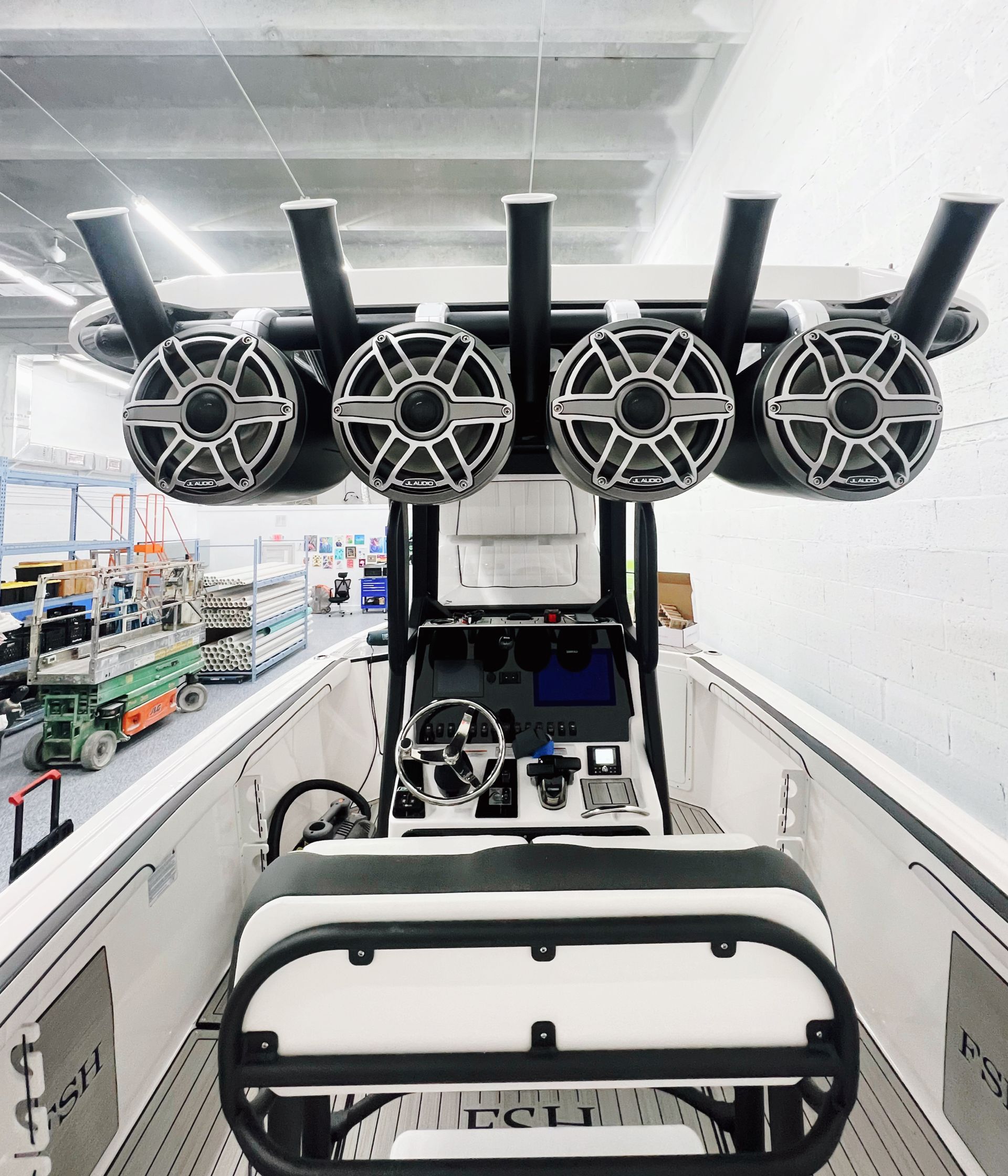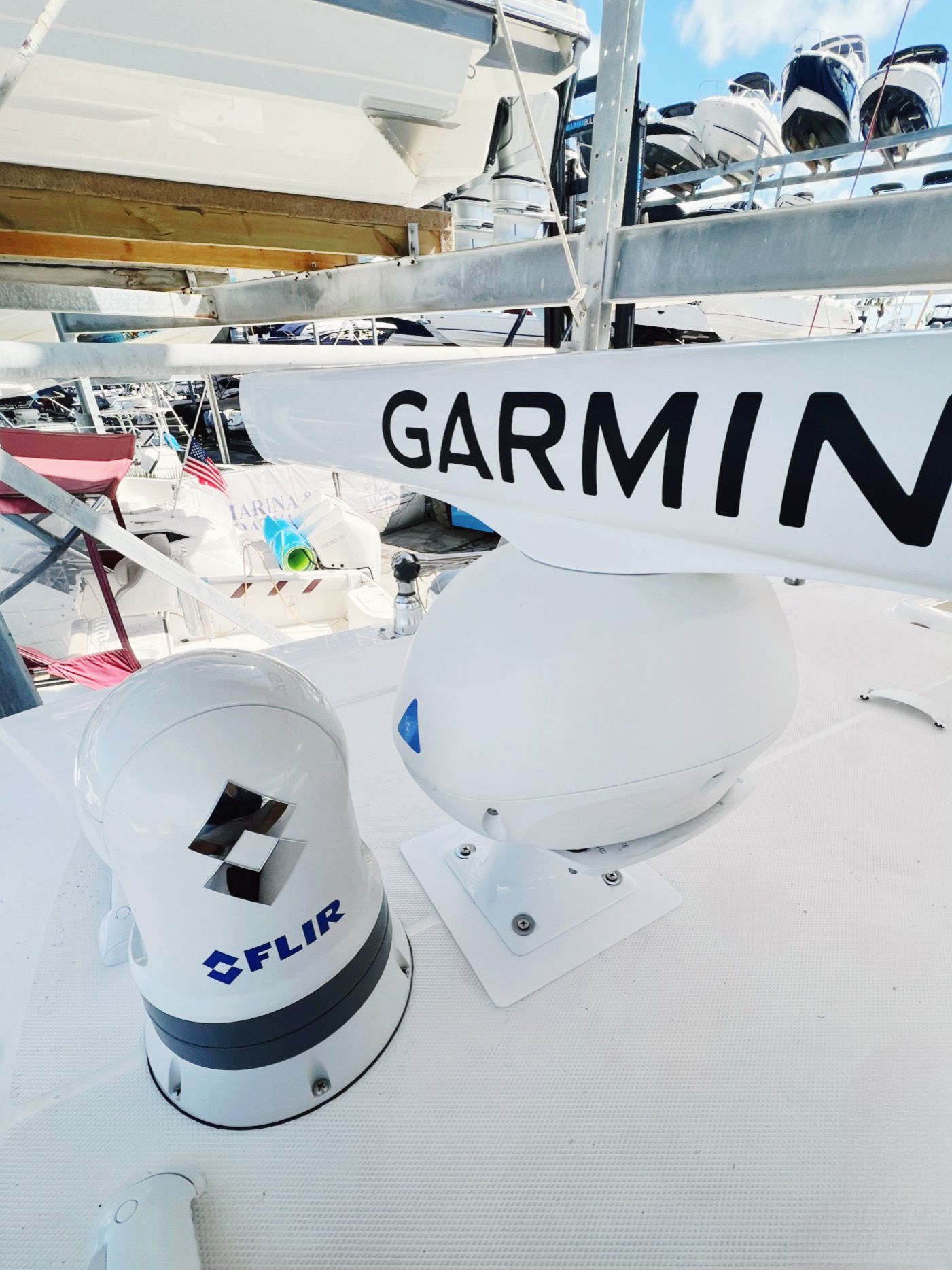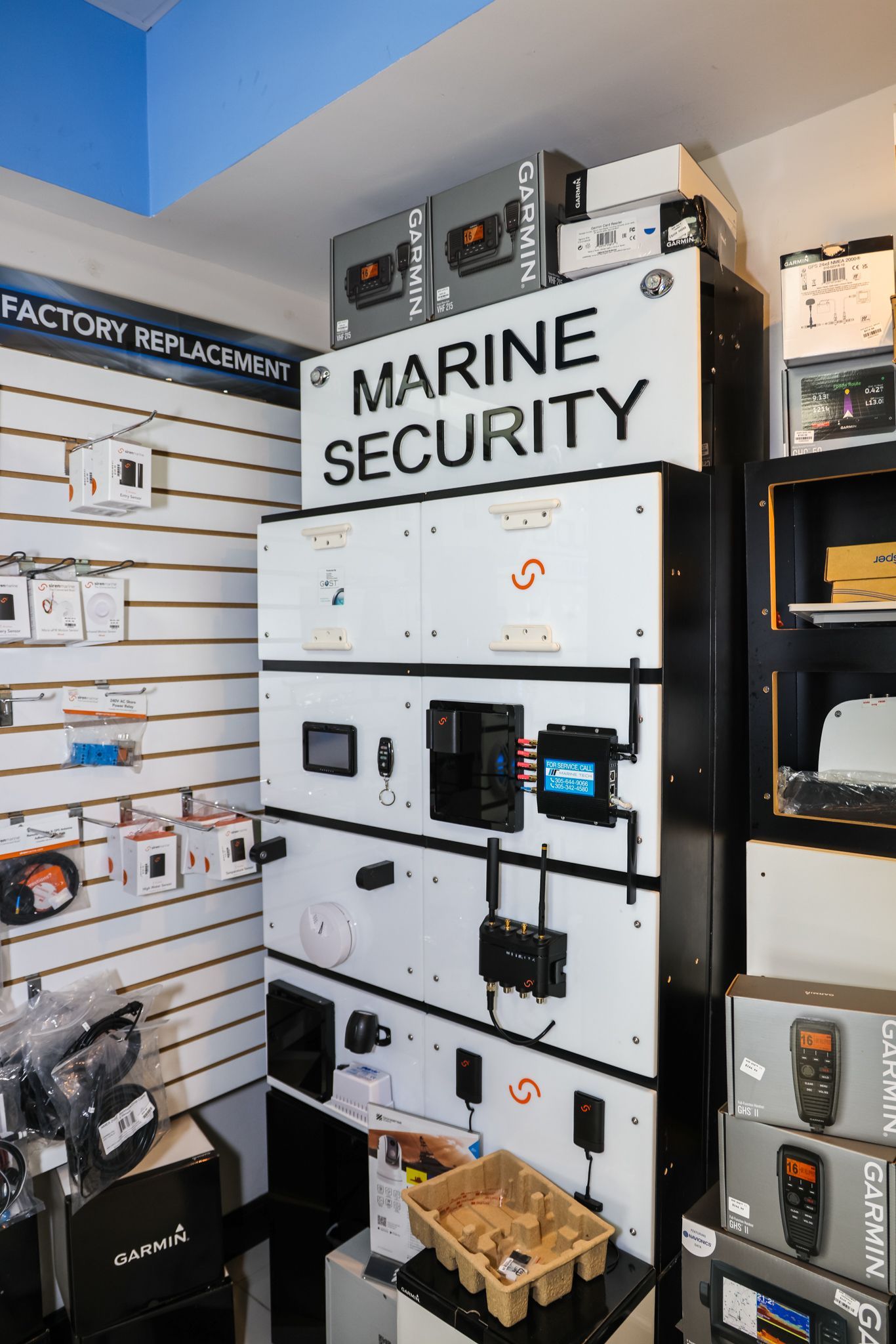How To Wire A Spotlight For A Boat? (2023)
Adding a spotlight to your boat can be a valuable safety feature, providing additional visibility when navigating through low-light conditions or in the event of an emergency.
However, wiring a spotlight can be a daunting task for those who are new to marine electronics.
In this article, we will walk you through the process of wiring a spotlight for your boat, step-by-step.
Whether you're looking to install a new spotlight or want to upgrade an existing one, this guide will help ensure that your wiring is done safely and effectively.
Gather Your Materials
Before beginning the installation process, make sure you have all the necessary materials. You will need the following items:
- Spotlight (LED is recommended)
- Power switch
- Wires (size depends on the amperage of the spotlight)
- Fuse and fuse holder
- Terminal connectors
- Crimping tool
- Heat shrink tubing
- Screwdriver
- Drill and drill bits
- Silicon sealant
Step 1: Choose the Right Location for the Spotlight
Properly installing a spotlight on your boat requires careful consideration of several factors to ensure it functions effectively.
One critical factor to remember when selecting the spotlight's location is the type of boat you have.
The size and design of your vessel will determine where the spotlight can be mounted without interfering with essential equipment or obstructing the captain's view.
The intended use of the spotlight is also a crucial consideration. If you use the spotlight for navigation, you must ensure it provides an unobstructed view of the water ahead.
For fishing or spotlighting, a location that offers a broader coverage area may be more appropriate. It's also essential to consider the size of the spotlight.
Larger, more powerful lights may require mounting on a mast or high point on the ship for optimal coverage, while smaller lights can be mounted on the bow or stern.
The angle of the spotlight is another factor to keep in mind. Ideally, the spotlight should be adjustable to be pointed in any direction, allowing you to adjust it quickly based on the conditions and needs of your boating activities.
Finally, you must consider the wiring and power requirements for the spotlight.
You'll need to ensure the wiring is installed correctly and the spotlight is connected to a power source, such as a battery.
It's also essential to have a switch that's easily accessible to control the spotlight.
Considering these factors, you can choose the ideal location for your boat's spotlight and ensure it functions as intended.
Step 2: Mounting the Spotlight
After choosing the right location for your spotlight, the next step is to mount it properly.
This is a crucial step in the installation process, ensuring the spotlight is secure and can withstand the harsh marine environment.
Before mounting the spotlight, it is crucial to ensure that you have all the necessary equipment, including mounting screws, nuts, washers, and a mounting bracket.
The spotlight kit should include these items in the spotlight kit, but it is always a good idea to double-check before beginning the installation process.
To mount the spotlight, follow these steps:
- Position the Mounting Bracket: The first step in mounting your spotlight is to position the mounting bracket. You should do this according to the location you chose for the spotlight. Ensure that the bracket is level and that the mounting holes align with the holes in the boat.
- Drill Holes: Once you have positioned the bracket, you must drill holes for the mounting screws. Use a drill bit slightly smaller than the screws to prevent the cavities from being too big. Make sure that the holes are drilled in the correct location, as any mistakes at this stage can be challenging to rectify.
- Install the Mounting Bracket: After drilling holes, insert the screws into the bracket and tighten them using a screwdriver or wrench. Make sure that the bracket is firmly secured to the boat, as any movement can cause damage to the wiring and other components.
- Attach the spotlight to the bracket: Once the bracket is securely attached, you can attach the spotlight to the bracket. This is usually done using nuts and washers, which are included in the spotlight kit. Ensure the spotlight is level and securely attached, as any movement can cause the beam to move and become less effective.
- Adjust the spotlight: Finally, adjust the spotlight to the desired angle. You can do this by loosening the mounting nuts and adjusting the angle of the spotlight. Once you have the desired angle, tighten the nuts to ensure the spotlight stays in place.
Step 3: Run the Wiring
Once you have chosen the right location for your spotlight, it's time to start running the wiring.
This is a critical step in the installation process, and it is important to follow the manufacturer's instructions carefully to ensure that the wiring is installed correctly and safely.
Here are the steps to follow when running the wiring for your spotlight:
- Determine the length of wire needed: Before you start running the wire, you must determine how much wire you will need. To do this, measure the distance from where you plan to install the spotlight to the battery or switch panel where you will be connecting the wiring. Be sure to add a few extra feet to the measurement to account for any curves or twists in the wire.
- Route the wiring:
Once you have determined the length of wire needed, you can start routing the wiring. Choosing the best route for the wiring is important to avoid any damage or interference. Generally, it's a good idea to run the wiring through existing channels and conduits, such as the conduit for the steering cables or any existing wiring channels. Be sure to avoid sharp edges or places where the wiring could rub against other components, as this can cause damage to the wire and result in a short circuit.
Step 4: Install the Power Switch
After you have completed the wiring process, it's time to fit your power switch.
This is an essential part of the spotlight system because it allows you to regulate and direct electricity into the spotlight.
Installing a power switch provides you with total control over your lighting setup!
This means that you can turn the spotlight on and off as needed, which is important for conserving battery power and avoiding unnecessary wear and tear on the spotlight.
Before installing the power switch, ensure you have all the necessary tools and materials.
You will need a drill, drill bits, a screwdriver, wire strippers, crimpers, electrical tape, and a power switch.
- Choose the location for the power switch. The power switch should be located in a convenient and accessible location, such as the boat's dashboard or the console. Ensure that the place you choose is dry and protected from the elements.
- Drill a hole for the switch. Once you have chosen the location for the power switch, use the drill to create a hole for the switch. Ensure that the gap is the appropriate size for the switch you use.
- Install the switch. Once the hole is drilled, insert the switch into it and secure it using the screws that came with it. Make sure that the switch is firmly and securely attached to the boat.
Step 5: Install the Fuse
To safeguard the spotlight and your boat's electrical system, in case of a short circuit or another issue, it is imperative to install the proper fuse properly.
Choosing an inadequate fuse size and improper installation may cause detrimental outcomes for both those on board and even more so for your vessel.
Therefore, fitting a suitable type of fuse is paramount when fixing spotlights onto boats.
Here are the steps to install the fuse:
- Choose the Right Fuse: Choose the right fuse for your spotlight before starting. The fuse should be rated according to the power consumption of the spotlight. Check the spotlight's manual for the power rating and choose a fuse that matches that rating. It's better to choose a lower rating than a higher one to ensure better protection.
- Disconnect the Power: Turn off the boat's power source before installing the fuse. It's essential to do this to avoid any electrical shock or damage.
- Locate the Fuse Box: The next step is to locate the fuse box. The fuse box is usually near the boat's battery or electrical panel. Check the boat's manual or consult an expert if you need help finding where it is.
- Remove the Fuse Box Cover: Once you've located the fuse box, remove the cover to access the fuse sockets. The body can be easily removed by unscrewing or pulling it off.
- Insert the Fuse: Take the fuse you've chosen and insert it into the appropriate fuse socket. Make sure to insert it firmly, so it doesn't come to lose while on the water. Also, make sure that the fuse fits the socket snugly and doesn't rattle or move around.
Step 6: Connect the Wires
After running the wires and installing the switch and the fuse, the next step is to connect the wires to the spotlight.
Before doing so, it is important to double-check that the power source is off and that no electrical current is running through the wires.
- Strip the Wires: First, you will need to strip the wires. This means removing the insulation from the end of each wire, exposing the bare metal. A wire stripper tool can make this process much easier and more precise. Be careful not to remove too much insulation, which can expose more metal than necessary and create a potential safety hazard.
- Connect the Wires: Once the wires are stripped, connect the positive wire to the positive terminal on the spotlight and the negative wire to the negative terminal. This is typically done by twisting the exposed wire around the terminal and securing it with a screw or a crimping tool. Ensuring the cables are securely fastened and cannot come loose is important.
- Insulate the Wires: After connecting the wires, it is important to insulate them to prevent any accidental electrical contact. You can do it using electrical tape or heat shrink tubing. Wrap the exposed wire with tape or slide the heat shrink tubing over the wire and use a heat gun to shrink it into place.
- Test the Connection: Once the wires are connected and insulated, testing the connection before sealing everything up is essential. Please turn on the power source and test the spotlight to ensure it turns on and off as expected. Check that the wires are not getting hot, which could indicate a potential short circuit.
- Seal the Connection: Once everything is tested and working correctly, it is time to seal the connection. Use a marine-grade sealant or a waterproof junction box. Ensure the sealant is completely dry and the junction box is adequately closed before using the spotlight.
It is important to note that wiring can be complex and dangerous, especially in a marine environment where the risk of corrosion and moisture damage is high.
Suppose you are uncomfortable with wiring or need to gain experience with electrical work.
In that case, we recommend seeking a professional's help to ensure everything is done safely and correctly.
Contact Us
Contact Us
Recent Posts
CONTACT US
Looking to upgrade your marine electronics?
With more than 25 years of experience, we can help you get started today!




